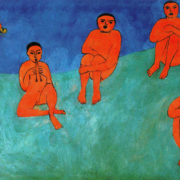Introduction, Group Psychoterapy with Psychotic and Borderline Patiens
I am honoured to present the fourth number of Funzione Gamma Journal edited by my Italian colleagues and me, about “group psychotherapy with psychotic and borderline patients “. The Funzione Gamma Journal has met with remarkable success, presenting papers coming mostly from a European tradition; with this number we establish a profitable, communicative connection with North America.
I hope that readers will find the same stimuli and interests that we felt in writing the papers contained in this issue.
Howard D. Kibel, M. D.
The papers enclosed in this number of the Funzione Gamma Journal reflect the increasing need for an exchange of clinical and theoretical experiences coming from different contexts in such a way as to permit the amplification of the cognitive instruments used in group psychotherapy. The authors illustrate, with their contributions, the practical and theoretical planning used in their clinical experience of group psychotherapy. The North American authors present models that can be linked to the institutional context and with the general problem of patient care. They have been able to elaborate models of group treatment, working in different contexts, considering how the planning of each treatment model adopted is connected to events that also happen in other levels inside a major extended treatment Read more

